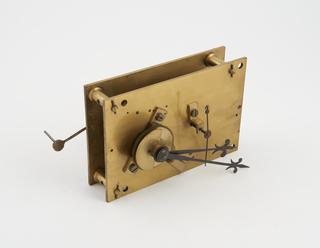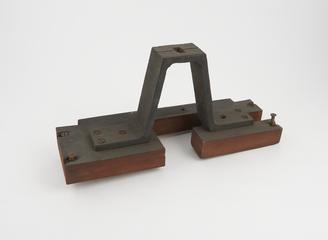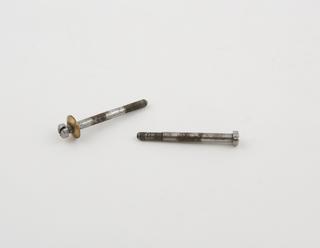Mahogany case for the electric clock
1845-1847
Bain's electrically driven clock. Electric clock including case, movement, pendulum, contactor bar, contactor, movement board and 2 movement screws, by Alexander Bain, United Kingdom, 1845-1847
This clock, patented by Alexander Bain in 1845-7, is one of the early electric clocks, and dates from only a few years after the invention of the electric telegraph. The pendulum is maintained in motion by the pull of an electromagnet energised after alternate swing and drives the clock wheelwork by means of a light arm and hook engaging with a ratchet wheel.
Bain was the first to maintain a pendulum in motion by means of electromagnetic impulses instead of by mechanical impulses transmitted through an escapement, as in ordinary clocks; this clock is one of his later designs.
The bottom of the pendulum carries a coil which swings over two bar magnets with their N. poles facing each other and separated by a small gap. When a current passes through the coil it is attracted by one magnet and repelled by the other, so that it receives an impulse. Electrical contacts are made every alternate swing by a brass slider impelled by a pin on the pendulum. This slider runs in two grooves, one of which is all of metal and the other partly of metal and partly of insulating material, and contact is made only when both ends of the slider are on metal. Contact occurs first near the end of a swing to the right and lasts during most of the ensuing swing to the left, the pendulum being impelled to the left during this time.
1845-1847

1845-1847
1845-1847

1845-1847

1845-1847

1845-1847

1845-1847